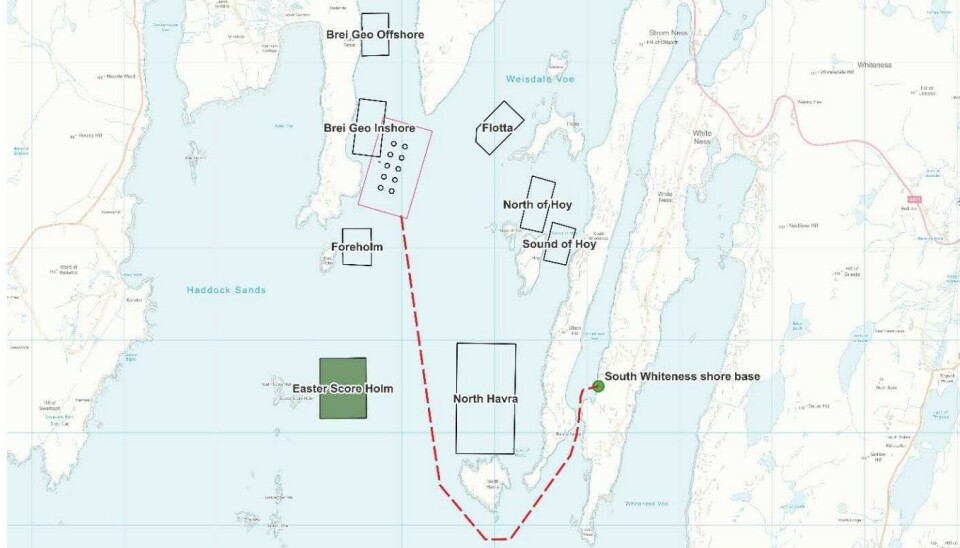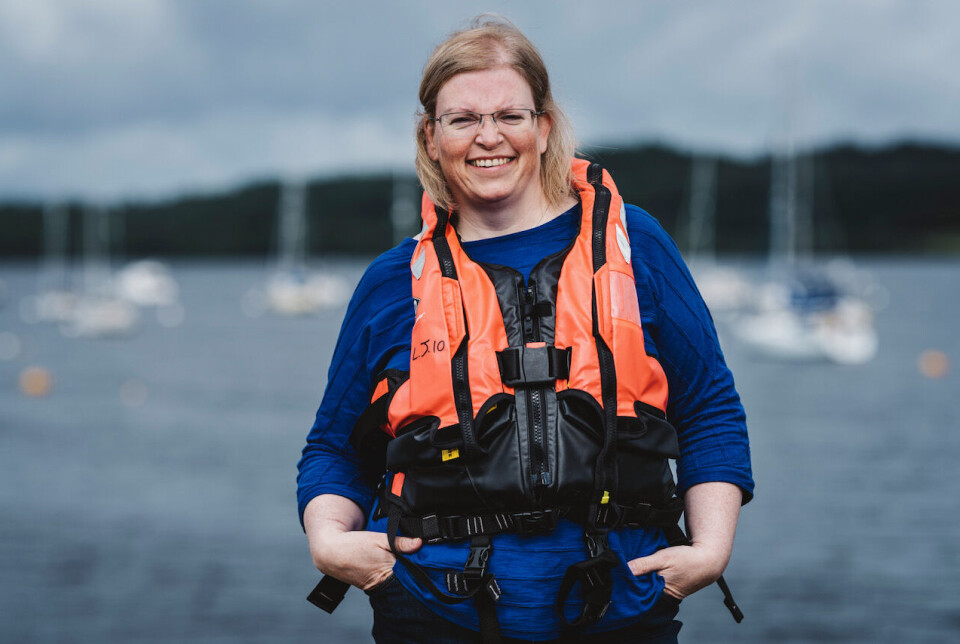
4,000-tonne salmon farm proposed for Shetland
Scottish Sea Farms plans to give up six smaller fallowed sites as it seeks better position and bigger pens for healthier fish
Scottish Sea Farms (SSF) is proposing to relinquish its rights for six unused sites in Shetland if it gets permission for a new 4,091-tonne salmon farm in the same area.
The farm would be one of the biggest in Scotland and is part of the company’s plan to consolidate operations into fewer but larger sites that are more efficient and use larger pens that are better for fish health. SSF proposes using 9 x 160-metre circumference pens and a 120m pen at the Billy Baa site, Scalloway.
Pens will have an inner net and an outer predator net and will have a stocking density of 14kg (1.4% fish to 98.6% water) per cubic metre.
Wider strategy
“The Billy Baa proposal is part of a wider farming strategy that will see us transition away from having lots of smaller farms (active and fallow), located relatively close to one another, towards having fewer farms but of a larger size, located in optimal locations with much greater space between sites,” said SSF head of sustainability and development, Anne Anderson.
“It’s one of what will be a series of planning applications aimed at improving fish biology and survival whilst still meeting environmental requirements, driven by the latest science, and mirroring global best practice.”
In a scoping application to Shetland planners, first reported in the Shetland Times, SSF says hydrodynamic modelling is currently under way which will inform the benthic, water column and assimilative capacity impact assessments. An ECE (Equilibrium Concentration Enhancement) assessment is also currently under way to estimate the proposed farm’s enhancement of dissolved nitrogen above background levels in the voe.
NewDepomod modelling indicates that a maximum biomass of 4,091 tonnes can be supported at the site.
Six sites may go
Should the proposal be approved, SSF intend to relinquish six consented fallow farms within proximity to the proposal, namely Brei Geo inshore, Brei Geo offshore, Flotta, Fore Holm, North of Hoy and Sound of Hoy, which have a combined maximum allowed biomass of 8,446 tonnes.
Should the proposal not go ahead, SSF said it is likely to begin farming in Foreholm (1,000 tonnes), Brei Geo Offshore (2,635 tonnes), and North of Hoy (1,190.5 tonnes), which are a greater distance from each other than from the other sites.
Anderson said that early examples of having fewer but larger farms, both within the company and in other countries, showed many benefits to fish biology and survival.
These included:
- Greater space between salmon pens, maximising water flow in and around pens, enhancing growing conditions further and helping encourage any health insults that arise to pass through the farm more quickly
- Deeper pens enabling SSF to keep fish low in the event of health insults on the surface layers of the water
- Combined, this means potentially fewer interventions and handling
- Husbandry staff can focus more of their time and resource into fewer pens, with present day and future farming leading to increased duties and more personnel needed on farm
- Workboats are spread less thinly around the estate

New jobs
In its scoping application, SSF said its proposed farm is part of a wider consolidation in the north Scalloway area involving the relinquishment of a number of consented farms.
“As these farms to be removed are not currently active the proposal will not result in any loss of jobs and the new proposed farm will require a minimum of an additional six employees, providing further skilled employment in local communities and significant additional investment in new equipment and increase in local supply chain spend,” said the company, which is Scotland’s second-largest salmon farmer by volume.
Anderson said that if SSF is granted permission, and receives that permission within the usual statutory timeframe, it hopes to be stocking Billy Baa in late spring or early summer of next year.
Although Billy Baa would be large, it would not be the biggest farm in Scotland.
Mowi’s Seaforth and Noster site, formed in 2021 by the amalgamation of two farms on Lewis, has a maximum biomass of 4,330 tonnes. It was the first in Scotland to use 160-metre pens following a decision by regulators to remove a de facto size limit of 120 metres on pen sizes and 2,500 tonnes on biomass.






















































